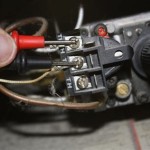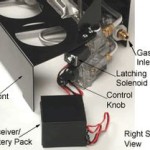Lennox Direct Vent Fireplaces: A Comprehensive Overview
Lennox direct vent fireplaces represent a significant advancement in residential heating and aesthetic design. These fireplaces offer a blend of efficiency, safety, and visual appeal, making them a popular choice for homeowners seeking a supplemental heating source and a focal point for their living spaces. Understanding the intricacies of Lennox direct vent fireplaces, including their functionality, benefits, installation considerations, and maintenance requirements, is crucial for making informed decisions about their integration into a home.
Direct vent technology is a core element of these fireplaces. Unlike traditional fireplaces that rely on a chimney to exhaust combustion byproducts, direct vent fireplaces utilize a sealed combustion system. This system draws air for combustion from outside the home and vents exhaust gases directly outdoors through a coaxial or concentric vent pipe. This design eliminates concerns about indoor air quality, backdrafting, and the need for a traditional chimney, making installation more flexible and cost-effective in many cases.
Lennox offers a wide range of direct vent fireplace models, differing in size, style, heat output, and fuel type. Gas-powered models are prevalent, utilizing natural gas or propane. Electric models, while not strictly direct vent in the same combustion sense, offer a similar ventless installation convenience and visual appeal. The selection process should involve careful consideration of the desired aesthetic, the heating needs of the space, and the available fuel source.
Key Point 1: Functionality and Operational Principles
The operational principle of a Lennox direct vent fireplace revolves around the sealed combustion chamber. The fireplace unit is designed to be completely sealed from the interior of the house. This seal is critical for safety and efficiency. The coaxial or concentric vent system, typically constructed of two pipes, facilitates the intake of outside air and the exhaust of combustion gases.
In a coaxial system, one pipe is situated inside the other. The inner pipe expels exhaust gases, while the outer pipe draws in fresh air for combustion. This design allows for efficient heat exchange, preheating the incoming air with the outgoing exhaust, thereby increasing the overall efficiency of the fireplace. A concentric system achieves the same result with a slightly different configuration, often with a round exhaust vent surrounded by a larger air intake vent.
The combustion process itself is carefully controlled within the sealed chamber. Gas-powered models typically use a burner system that mixes fuel with the incoming air in a precise ratio to ensure clean and efficient combustion. Electronic ignition systems are commonly employed for reliable starting and stopping of the fireplace. Some models feature variable flame height controls, allowing users to adjust the heat output and visual appearance of the fire.
Safety features are integral to the design of Lennox direct vent fireplaces. Oxygen Depletion Sensors (ODS) are commonly incorporated to monitor oxygen levels in the surrounding area. If oxygen levels drop below a certain threshold, the ODS will shut off the gas supply to prevent carbon monoxide buildup. Tempered glass fronts are used to protect against accidental contact with the hot firebox, and safety screens or barriers may be required, particularly in households with young children.
Key Point 2: Advantages and Benefits of Direct Vent Technology
The adoption of direct vent technology in fireplaces offers numerous advantages over traditional masonry or open-hearth fireplaces. One of the primary benefits is improved energy efficiency. The sealed combustion system minimizes heat loss through the chimney, directing more of the generated heat into the living space. This results in lower energy bills and reduced environmental impact.
Enhanced safety is another significant advantage. The sealed combustion chamber prevents the backdrafting of combustion gases into the home, eliminating the risk of carbon monoxide poisoning and other respiratory hazards associated with poorly ventilated fireplaces. The absence of a traditional chimney also reduces the risk of chimney fires and related structural damage.
Installation flexibility is a major selling point for direct vent fireplaces. Because they do not require a traditional chimney, they can be installed in a wider range of locations within a home. Vent pipes can be routed horizontally through an exterior wall or vertically through the roof, providing homeowners with greater design freedom. This makes direct vent fireplaces a viable option for homes that lack an existing chimney or where chimney construction is impractical or cost-prohibitive.
Improved indoor air quality is another benefit. The sealed combustion system prevents the introduction of smoke, soot, and other pollutants into the living space. This is particularly important for individuals with allergies or respiratory sensitivities. Direct vent fireplaces contribute to a cleaner and healthier indoor environment.
Finally, direct vent fireplaces offer convenience and ease of use. Many models feature remote control operation, allowing users to adjust the flame height, temperature, and other settings from the comfort of their couch. Electronic ignition systems eliminate the need for manual lighting, and some models offer programmable timers for automated operation.
Key Point 3: Installation and Maintenance Considerations
Proper installation is crucial for ensuring the safe and efficient operation of a Lennox direct vent fireplace. It is strongly recommended that installation be performed by a qualified and certified technician who is familiar with local building codes and manufacturer's specifications. Incorrect installation can compromise safety and void the warranty.
The installation process typically involves selecting a suitable location for the fireplace, running the vent pipes to the exterior of the home, connecting the fireplace to the gas or electric supply, and testing the system to ensure proper functionality. Adherence to manufacturer's instructions and local codes is paramount throughout the installation process.
Vent pipe routing is a critical aspect of the installation. The vent pipes must be properly sized and configured to ensure adequate airflow and prevent the buildup of exhaust gases. The pipes must also be securely supported and sealed to prevent leaks. The specific venting requirements will vary depending on the fireplace model and the installation location.
Regular maintenance is essential for maintaining the performance and safety of a Lennox direct vent fireplace. This includes periodic cleaning of the burner assembly, vent pipes, and glass front. The frequency of cleaning will depend on the frequency of use and the fuel type.
It is also important to inspect the vent pipes regularly for any signs of damage or blockage. Birds' nests, debris, and other obstructions can restrict airflow and compromise the safety of the fireplace. Any damaged or blocked vent pipes should be repaired or replaced immediately.
A professional inspection by a qualified technician is recommended annually. This inspection should include a thorough examination of the entire fireplace system, including the burner assembly, vent pipes, gas or electric connections, and safety features. The technician can identify any potential problems and perform necessary repairs or adjustments to ensure the fireplace is operating safely and efficiently.
For gas-powered models, it's crucial to have the gas lines inspected regularly for leaks. Even small gas leaks can pose a significant safety hazard. A qualified technician can use specialized equipment to detect gas leaks and make necessary repairs.
Finally, homeowners should always follow the manufacturer's instructions for operating and maintaining their Lennox direct vent fireplace. This includes using the correct fuel type, avoiding the use of flammable materials near the fireplace, and promptly addressing any problems or concerns.

Lennox Merit Plus

Lennox Direct Vent Electronic Gas Fireplace

Lennox Merit Plus

Lennox Hearth Spectra The Fireplace King Huntsville Ontario Muskoka For Your Heating Cooling And Grilling Needs

Lennox Direct Vent Fireplaces Weltons Heating And Cooling

Lennox Visions Elite Series Direct Vent Freestanding Stove

Rhapsody Linear Direct Vent Fireplace

Lennox Contemporary Gas Fireplaces Modern Westchester Ny

Gas Fireplace The Cozy Cabin Lennox Hearth Parts

Mpdt 3328cne Lennox Direct Vent Gas Fireplace Heater
Related Posts








